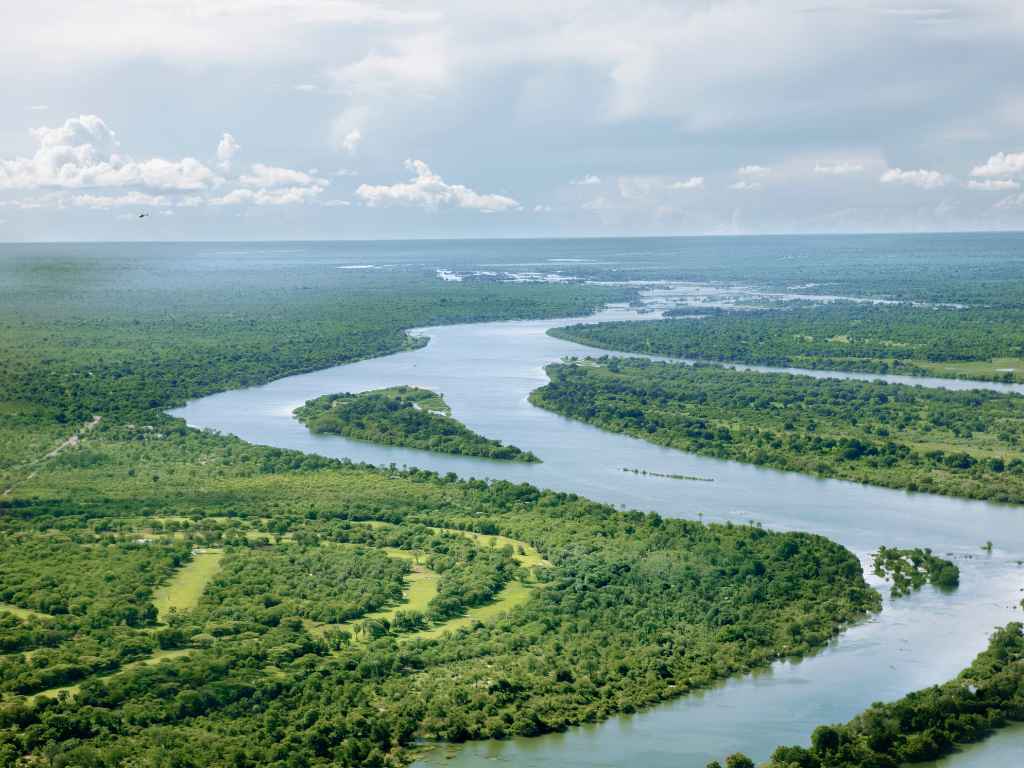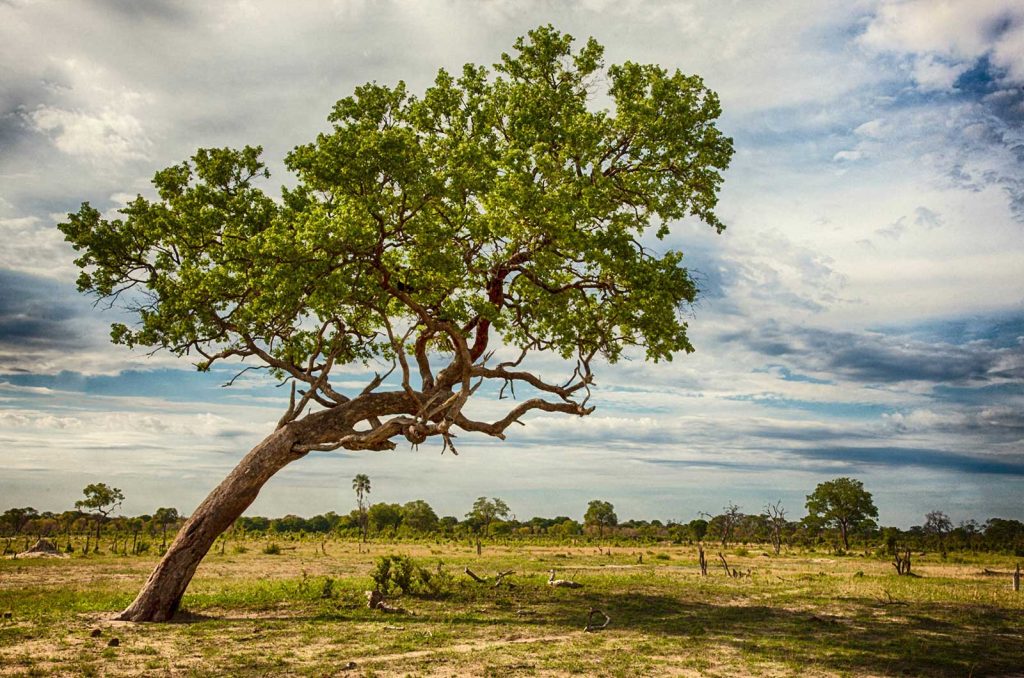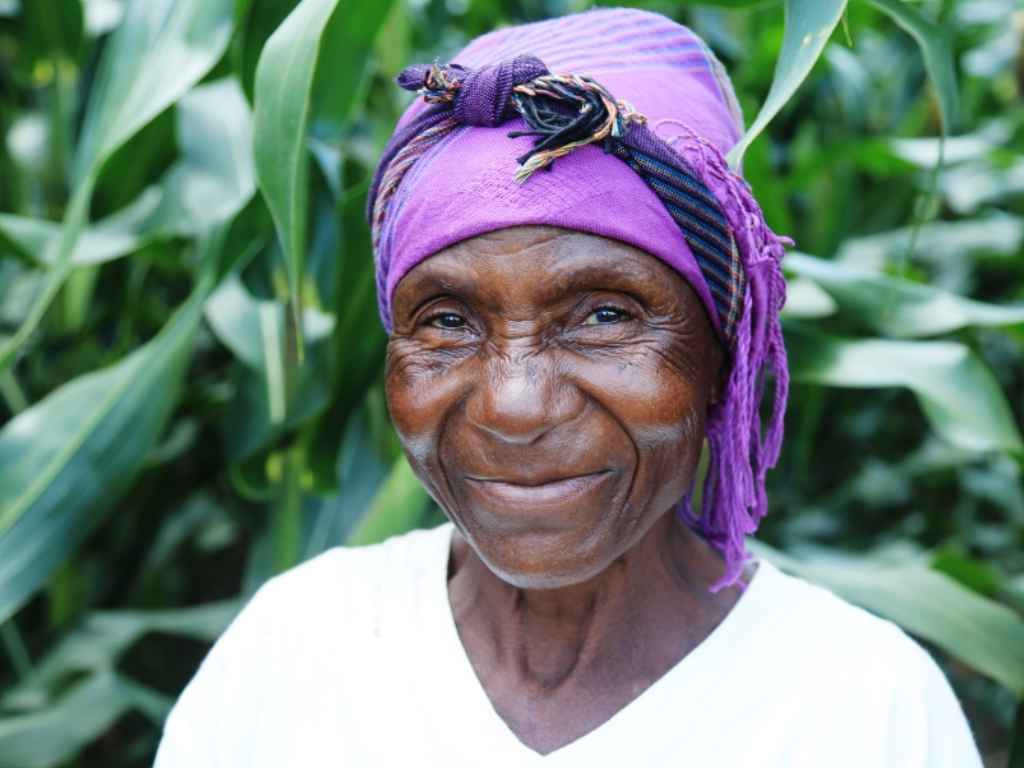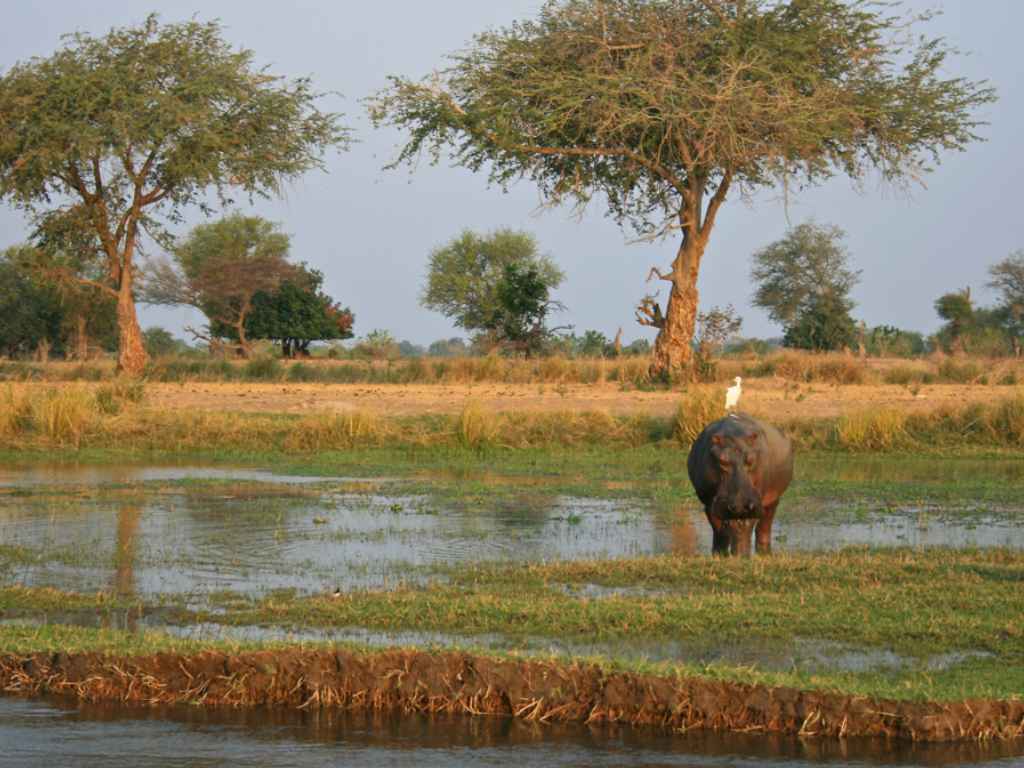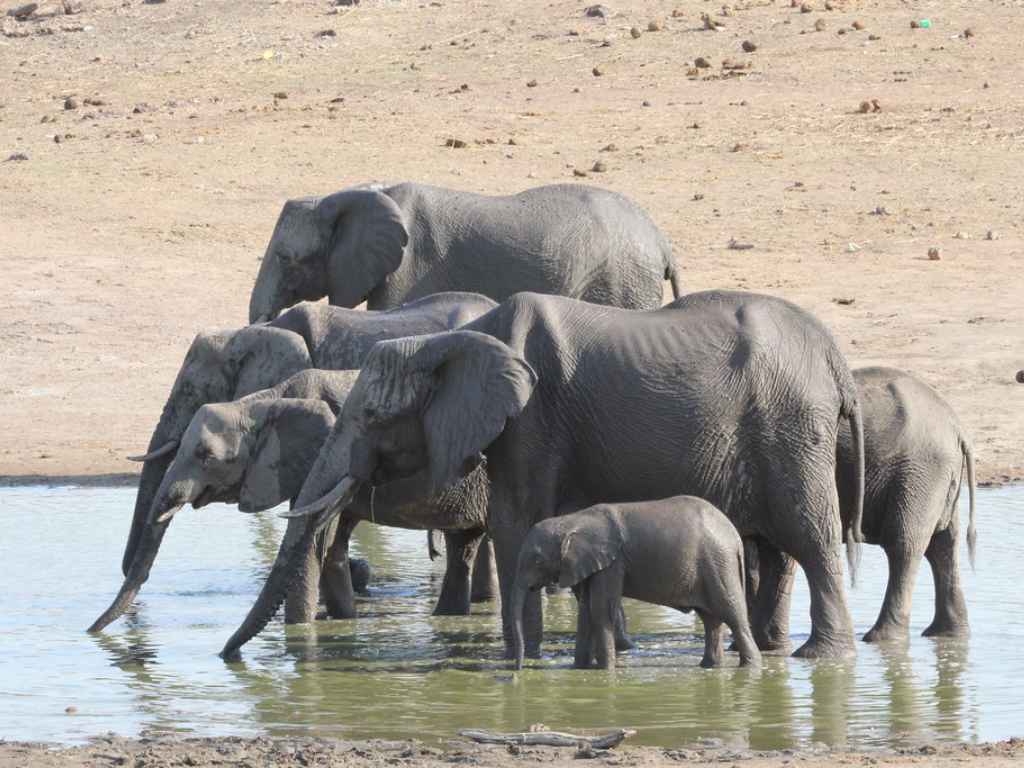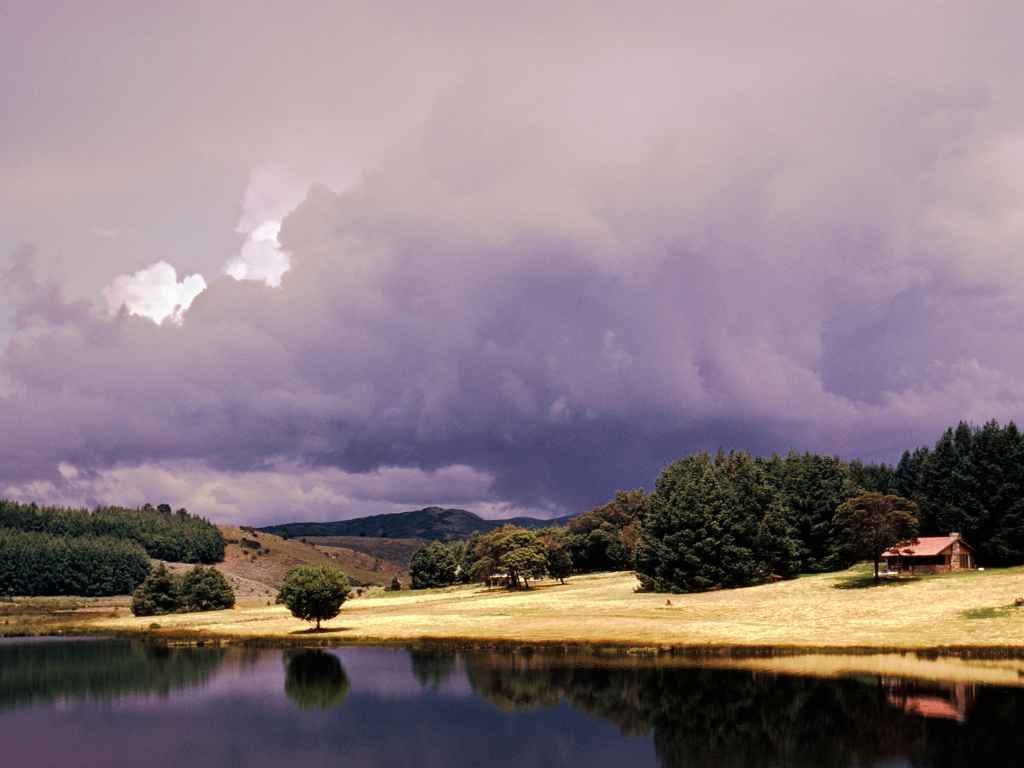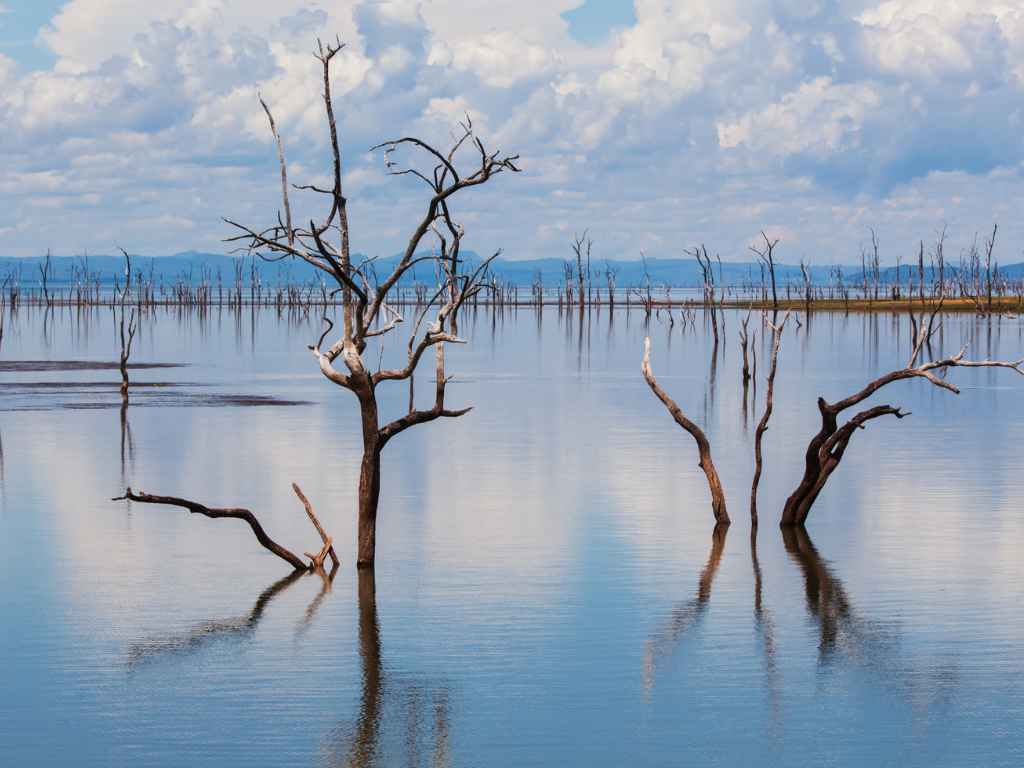Imagine standing on the edge of Africa’s fourth-longest river, feeling the mist of its thunderous waterfalls on your face. Welcome to the Zambezi River, a natural wonder that’s as wild as it is beautiful. This majestic river, stretching over 2,200 miles, is a lifeline for some of the continent’s most iconic wildlife and a source of livelihood for millions of people.
From its source in Zambia to its mouth in the Indian Ocean, the Zambezi has stories to tell. Stories of diverse ecosystems, thrilling adventures, and ancient civilizations. So, let’s dive into the world of the Zambezi River, where every ripple and roar is a chapter in the grand narrative of Africa.
Introduction
Overview of the Zambezi River
As mentioned earlier, Zambezi River stands as Africa’s fourth-longest river. This natural wonder, spread over a stretch of more than 2,200 miles, serves as an essential lifeline for wildlife and the communities that call its banks home. With each mile, it unfolds a fascinating tale – a tale of diverse ecosystems, thrilling adventures, and ancient civilizations. Thus, an exploration of the Zambezi River isn’t merely about discovering a majestic water body — it’s about delving into the heart of Africa’s grand narrative.
Location and Geography
Embarking from its source in Zambia, the Zambezi River cuts a formidable path across six countries before finding its way into the Indian Ocean. This profound journey colors it with diverse landscapes. Its banks bristle with thick forests, grasslands echo with chirping birds and cascading waterfalls add to its rhythmic symphony. With strategic placements like the Kariba Dam and Victoria Falls along its course, the river impacts not just the geography but also the socio-economic aspects. In short, it’s a geographic masterpiece, deserving of its accolades and fame among explorers.
The Mighty Zambezi
From its humble beginnings to flowing into the Indian Ocean, the Zambezi River captivates the world with its might. It presents a seamless blend of overpowering world wonders, unique ecosystems, and captivating geological features.
Source, Course, and Tributaries
Emerging from the Mwinilunga District in Zambia, the Zambezi takes a journey of over 2,200 miles. Flows through six different countries which are Zambia, Angola, Namibia, Botswana, Zimbabwe, and Mozambique, tracing its way into the Indian Ocean. This river enriches its path with several substantial tributaries. Examples include the Luena and Chobe rivers, bringing in additional volume and unique biodiversity.
Unique Ecosystems
Be it stunning forests or vast floodplains, the Zambezi paints many enchanting pictures throughout its winding journey.
Riverine Forests
Riverbanks of the Zambezi proudly flaunt riverine forests. Trees such as African mangroves and waterberry trees, provide habitats for species like the African fish eagle and the Goliath heron.
Floodplains and Wetlands
As the river expands, it gives rise to floodplains and wetlands. Regions like the Barotse Floodplain in Zambia, are home to numerous water birds and mammals, including the African buffalo and Lechwe antelopes.
Geological Features
Beyond its biological richness, the Zambezi shapes Africa’s physical terrain with astounding geological features like gorges and magnificent waterfalls.
Gorges and Canyons
Its flow steadily carves gorges and canyons, further enriching the scenic beauty of this magnificent river. A key highlight is the Batoka Gorge, a testament to the relentless power of water over landscapes.
Victoria Falls
Crowning this already splendid geographical masterpiece, the Zambezi boasts Victoria Falls, one of the greatest attractions in Africa. With a breath-taking width of more than a mile and height exceeding 108 meters, it stands as the largest waterfall in the world based on combined width and height. The locals bestow upon it a fitting name, Mosi-oa-Tunya, meaning “The Smoke that Thunders”.
This section adds a new layer of understanding to the Zambezi – showcasing not only the river’s might but also its part in nurturing Africa’s complex, verdant environments, and molding its breath-taking landscapes.
Wildlife and Biodiversity
This section delves into Zambezi River’s nature, spotlighting the rich biodiversity and the profound connection between the river and wildlife. As a cradle of unrivaled animal species and a hotspot for conservation initiatives, it forms a living, pulsating ecosystem.
Animal Species
Elephants and Hippos
Stamping their mighty presence, elephants and hippos are cornerstone species of the Zambezi. These colossal mammals frequent riverbanks and shallow areas. They rely on the river for sustenance, using it as a pathway for navigation.
Predators (Lions, Leopards, Hyenas)
Predators like lions, leopards, and hyenas find a thriving home in the Zambezi region. Tracking prey in the dense floodplains, their presence subtly mirrors the health of the ecosystem.
Birdlife
With over 400 recorded species, the Zambezi lays claim to an impressive birdlife diversity. Birds such as fish eagles, herons, and kingfishers color the avian landscape and serve critical ecological roles ranging from seed dispersion to pest control.
Conservation and Sustainable Tourism
Community-Based Initiatives
Community-focused projects form key strategies for protection of the Zambezi’s natural legacy. By involving local tribes in conservation efforts, these initiatives not only safeguard environmental resources, but also imbue local communities with a sense of stewardship.
Anti-Poaching Efforts
Due to the considerable animal diversity, anti-poaching efforts sited along the Zambezi are indispensable in the fight to preserve its wildlife. Robust law enforcement, surveillance technology, and ranger training have been implemented to secure the region’s fauna from illegal hunting. This commitment to protecting Zambezi’s biodiversity cherishes the river’s role as a steward of Africa’s wildlife.
Outdoor Adventures and Activities
The Zambezi River, as I’ve mentioned previously, isn’t only a haven for diverse species and splendid landscapes, but also a playground for outdoor enthusiasts. Let’s dive into the opportunities the great river offers.
River Safaris and Cruises
Zoom in on Africa’s wonderful wildlife with river safaris and cruises. The placid waterways enable close encounters with animals, like hippos and crocodiles, basking on the riverbanks. Spot elephants, giraffes, and antelopes amidst the riverine grasslands as you leisurely cruise along. Birdwatchers, gear up! You’d spot exotic birds like African Fish Eagles, herons, and kingfishers, to name a few.
Canoeing and Kayaking
Crave for adrenaline rush? Strap on for canoeing and kayaking adventures. It’s a thrilling way to explore the Zambezi River’s channels and tributaries. Navigate through calm glides or take on whitewater rapids, if you dare. Either way, you’d be steered past stunning forests, rich wetlands, and a gamut of wildlife.
Fishing
Enjoy fishing? The Zambezi River is a place for you. Particularly renowned for Tigerfish and Vundu Catfish, these waters promise a gripping fishing experience. Remember, catch-and-release practices are prevalent here, promoting sustainable fishing sports.
Walking Safaris and Hiking
Fancy a trodden path? Embark on walking safaris and hiking trips along the Zambezi River’s edges. It’s a chance to tread untouched terrains, relish serenity, and delve into nature intimately. Trudge or trek, your paths would be peppered with bird calls, rustling vegetation, and animal sightings.
Accommodation Options
Lodges and Camps
Resting along the Zambezi River banks, lodges and camps provide guests unparalleled views and immediate proximity to the aquatic and terrestrial wildlife. Custom-built with an ecological ethos, these dwellings often merge seamlessly into the environment, becoming an intimate part of the Zambezi’s scenic tapestry.
Along the Zambezi River
Lodges strewn along the river offer a mix of luxury and authentic exposure to African wilderness. Revel in the tranquil ambiance with thatched chalets nestled in groves of mahogany and wild fig trees. Watch elephants, hippos, and varied bird species frequents the riverbanks right from your balcony.
Private Concessions
Private concessions, some housed within national parks, offer high-end lodgons with indulgences like private pools, outdoor showers, and gourmet dining. Ascend the blissful solitude, knowing the land around you is reserved exclusively for your lodge guests.
Camping
For those seeking a raw, intimate brush with nature, camping offers an ideal choice.
Designated Campsites
Designated campsites situated amidst lush forests or overlooking the Zambezi provide both security and serenity. Facilities generally include restrooms, fire pits, and cooking areas, enabling campers to enjoy a comfortable outdoor living experience.
Mobile Camping Safaris
For those keen on full immersion in the Zambezi’s pulse, mobile camping safaris are the perfect answer. Guided excursions organize portable camps that move with your safari, supplying tents, meals, and essential gear. Every morning carries the anticipation of unknown, every night beneath a starlit African sky – a unique memory in the making.
Nearby Towns and Facilities
Several towns and facilities skim the periphery of the Zambezi. They sustain availability of essential amenities such as restaurants, grocery stores, medical facilities, and internet connectivity – ensuring the modern convenience isn’t too far from the wild escapade.
Whether you’re an adventure-seeker valuing the thrills of wilderness camping, or a luxury-lover desiring comfort in the lap of nature, the Zambezi River offers a myriad of accommodation options to cater your yearnings.
Getting to the Zambezi River
Reaching the adventure-rich Zambezi River involves diverse modes of transport. It’s pivotal to plan this journey meticulously, as the mode of transport may vary according to the country you are traveling from and the season.
By Air
Flying stands as the fastest and most convenient way to get to the Zambezi River. Its nearby areas like Livingstone in Zambia and Victoria Falls in Zimbabwe have international airports. These airports host numerous airlines, connecting to various cities around the world. Direct flights from major international airports in Europe, Asia, and North America to Johannesburg in South Africa are frequent, with connecting flights to the abovementioned destinations. Upon arrival, transfers from the airport to accommodations are commonly arranged by the lodges or hotels themselves.
By Road
For those seeking a more scenic journey, traveling by road remains a profound choice. The Zambezi region’s road network is well-developed, providing easy access from surrounding countries like South Africa, Botswana, and Namibia. However, bear in mind that during the rainy season, certain tracks may become challenging to traverse.
Tour Packages
For a worry-free, comprehensive trip, booking a tour package can prove to be quite productive. Not only does it provide transportation but also includes accommodation, meals, and numerous outdoor activities. Various tour operators offer packages specializing in wildlife safaris, river cruises, camping, and more. Consider your preferences carefully when choosing, as packages can vary greatly in terms of destinations, activities included, and level of luxury provided.
Best Times to Visit
The ideal period to venture on a trip to the Zambezi River rests heavily on one’s interests: water levels, wildlife visibility, or cultural festivities. These elements shift noticeably to reflect the changing seasons.
Seasonal Variations
Africa’s distinctive seasons greatly affect the Zambezi River. The dry season, extending from April to October, sees lower water levels, creating an opportune moment for some thrilling white-water rafting, particularly between August and December. The River’s water levels are the lowest and the rapids, exceedingly exhilarating. On the other hand, during the wet season, spanning November to March, the river brims with water, transforming Victoria Falls into an awe-inspiring powerful cascade, especially between February and May when the river is at its fullest.
Wildlife Viewing Opportunities
Zambezi River’s animal population also responds to this annual weather cycle. Dry season invites a larger concentration of wildlife to the riverbanks. From June to October, one finds herds of elephants, buffaloes, and antelopes flocking towards remnant water sources, making it an optimal time for wildlife safaris. It’s also a fruitful period for bird watching, with numerous migratory species adorning the River banks, creating a paradise for bird enthusiasts. However, the lush greenery fostered during the rainy season offers a haven for myriad insect species, which in turn allure a plethora of bird species, providing an equally enchanting spectacle for bird lovers particularly, around December and March.
Special Events and Festivals
The local calendar of events adds another degree of appeal for many visitors exploring the Zambezi River. Notable events include the Victoria Falls Marathon, occurring annually in June, and the Zambezi International Regatta in September. These events attract a global audience eager to participate or cheer. For those drawn to cultural interactions, the Lwiindi Ceremony, celebrated each July, offers an immersion into the seasonal rhythms and spiritual beliefs of the Tonga people living along the river shores.
Practical Information
Having a smooth experience while visiting the Zambezi River, that’s fourth-longest river in Africa, depends on adequate preparation. The following sections detail practical inputs on entry fees, safety measures, appropriate gear and necessary health precautions.
Entry Fees and Permits
Taking a trip to sublime Zambezi encompasses diverse costs. Park fees per person amounts up to $15 daily for the Mosi oa-Tunya National Park and $20 for Zimbabwe’s Victoria Falls National Park (as of 2020). Additional fees apply to various activities such as fishing, river safaris and white-water rafting. Also, I advise setting aside funds for several game reserve visits. A visa is required for travelers from most countries, with single-entry visas costing $50.
Safety and Security
Ensuring safety while exploring the green wilderness of Zambezi is paramount. Most tourists encounter no safety issues; nevertheless, I encourage adherence to basic travel protocols. First, keep a close internet track of country-specific travel advisories. Second, consider securing travel insurance that can cover unexpected incidents like medical evacuation. Finally, for safety during activities such as white-water rafting and wildlife viewing, follow lodge and tour guides’ advice closely.
Packing and Gear
Knowing what to bring plays a crucial role in maximizing your Zambezi experience. For instance, lightweight clothing is ideal given Zambezi’s warm climate, while a warm jacket comes in handy during cooler, early morning game drives. On footwear, comfortable walking shoes and water-resistant sandals prove useful for various activities. Don’t forget sun protection items like hats, sunglasses and a high SPF sunscreen. To immortalize Zambezi’s unforgettable moments, pack a camera with a solid zoom capability.
Health and Vaccinations
Staying healthy during your Zambezi adventure should be prioritized. Seek advice from your healthcare provider for relevant vaccinations, keeping in mind that yellow fever immunization may be required, especially if you’re arriving from another yellow fever country. Malaria is common in many parts of Zambia and Zimbabwe, so consider anti-malaria medication, using insect repellent, and sleeping under a mosquito net. Also, exiting African countries may require proof of a recent negative COVID-19 test before allowing departure.
Cultural and Historical Context
Local Communities and Tribes
I find the Zambezi River Basin home to numerous ethnic groups, each with its unique traditions and cultures. Bantu tribes, like the Tonga, Lozi, and Chewa, are some of the primary residents, displaying rich cultures deeply tied to the river. For example, the Lozi tribe celebrates the annual Kuomboka festival – a symbolic movement of the Litunda (king) from the flood plains of the Zambezi to higher grounds.
Archaeological Sites and Rock Art
Archaeological evidence points towards the Zambezi River Basin’s bustling prehistoric life. Sites like Kalambo Falls reveal human presence dating back almost 300,000 years – a testament to Africa’s rich and ancient heritage. Notables include the Bushman rock art in East Zambezi, which offers a glimpse into the spiritual and everyday life of the region’s early inhabitants.
Colonial History and Exploration
Casting an eye back into the annals of history, the Zambezi River played a pivotal role during the age of colonization and exploration. It was the Scottish missionary David Livingstone who opened up the African interior, discovering Victoria Falls during his ambitious journey along the Zambezi in the mid-19th century. Later, in the scramble for Africa, the river became a path for colonial powers, leaving a lasting legacy seen in the region’s infrastructure and cultural mix till date.
Responsible Tourism
Responsible tourism’s rise is one development of current interest on the Zambezi. This tourism form, rooted in respecting biodiversity, local cultures, and promoting sustainable practices, aligns with the global shift towards ethical travel. As an example, lodges and tour operators along the river actively participate in conservation efforts, reducing environmental footprints, and support community-based enterprises like local artisans and farmers. Indeed, mindful tourism in the Zambezi region fosters a mutually beneficial relationship between visitors and the local environment and communities.
Beyond the Zambezi River
Delving deeper into exploration, there’s a wealth of unique experiences lying just beyond the Zambezi River. Diverse national parks, scenic Victoria Falls surroundings, and enthralling adventure activities are worth exploring.
Other National Parks and Reserves
Around the Zambezi River, other conservation areas abundantly thrive. These include Hwange National Park, Zimbabwe’s largest park, which houses over 100 species of mammals, such as elephants and rare wild dogs, or Kafue National Park, Zambia’s oldest park, famed for its remarkable variety of birdlife. You’ll find Mana Pools National Park, a UNESCO World Heritage Site, ideal for wildlife sightings, most notably four of the Big Five – elephants, leopards, lions, and buffalo. Each park, notwithstanding its proximity to the Zambezi, offers a unique safari experience further escalating Africa’s rich wildlife allure.
Victoria Falls and Surrounding Areas
Victoria Falls, a spectacular highlight crowned the ‘Smoke that Thunders’, presents breathtaking views just off the Zambezi River. A UNESCO World Heritage Site, Victoria Falls boasts the most significant curtain of falling water globally. As a tourist, you can explore surrounding areas like Mosi-oa-Tunya National Park, home to diverse fauna and flora. Or you might consider a sunset cruise on the Zambezi River, observe Victoria Falls Bridge, noteworthy for its historical and engineering significance, and visit quaint local markets for a dash of authentic African culture.
Adventure Activities
The Zambezi River and its environs aren’t limited to the serenity of wildlife and scenery; there’s plenty of thrill for the adventurous spirit. White-water rafting is a popular activity, boasting some of the world’s best rapids. Canoe safaris offer unique river-based game viewing, while bungee jumping off the Victoria Falls Bridge provides an adrenaline-pumping leap with an incredible backdrop. For those with a fondness for heights, micro-light and helicopter flights nestle a splendid aerial view of the Victoria Falls and the winding Zambezi River. While the river tempts avid anglers with a quest for catching the fearsome Tiger Fish, its waters ensure a mesmerizing allure for the explorers.
Tips and Recommendations
Delving into the heart of Africa isn’t complete without sojourning at the Zambezi River. To ensure a truly unforgettable experience, I offer several insider tips and resources for visitors.
Photography Tips
Capturing the essence of the Zambezi River could seem daunting. Yet, with the right tips, you’ll take extraordinary photos. For morning shots, it’s beneficial to place animals or scenery against the rising sun, creating an impressive silhouette. Mid-afternoon is the optimal time for panoramas, assuring accurately-exposed photos. From the lens perspective, wide-angle lenses impressively capture vast landscapes, while a 70-200 mm lens is effective for intimate wildlife scenes. To build compelling narratives in wildlife, patience is necessary; wait for the right moment, capturing behaviours natural to the wilderness.
Recommended Guides and Operators
When embarking on an African adventure, choosing an experienced guide or operator guarantees unparalleled guidance, enhancing the thrill of exploration. Trusted organizations such as Africa Travel Resource and Gondwana Tours & Safaris offer comprehensive services, implementing a sustainable approach to tourism. These operators provide exceptional safari tours, with intimate knowledge of the Zambezi River’s environment, plus an emphasis on conservation and respect for native cultures.
Souvenirs and Local Crafts
While roaming along the banks of the Zambezi River, one encounters a wealth of skillfully-created local crafts. African sculpting, especially Shona sculptures, is a potent reminder of the cultural richness inherent in the region. Moreover, the local markets are bustling with handmade jewelry made of vibrant beads and intricate wirework. As a nice touch, take home Tonga baskets, reflecting the artistic flair of the Tonga people and contributing to the local economy.
Additional Resources
To aid your Zambezi exploration, I’ve composed a collection of essential resources. The Africa Travel and Leisure Magazine provides detailed articles and first-hand accounts of experiences around the Zambezi River. Additionally, the Bradt Guide to Zambia and Lonely Planet’s guide to Zimbabwe include comprehensive destination information, including attractions, local customs, and safety tips. Lastly, for real-time updates on Zambezi River conditions and conservations news, I recommend the African Parks website and social media pages.
Conclusion and Final Thoughts
So, there you have it. The Zambezi River isn’t just a river; it’s a vibrant ecosystem teeming with life and culture. It’s a place where luxury meets wilderness, and adventure is around every bend. Whether it’s the thrill of white-water rafting or the serenity of a canoe safari, there’s an outdoor activity for everyone. But it’s not all about the adrenaline rush. The region’s rich history and unique traditions make it a cultural treasure trove too. And let’s not forget the importance of responsible tourism in preserving its biodiversity and respecting local cultures. Beyond the river, national parks like Hwange, Kafue, and Mana Pools promise unforgettable safari experiences. And of course, the majestic Victoria Falls adds a touch of magic to the whole experience. So, whether you’re a seasoned traveler or a first-time visitor, the Zambezi River has something to offer you. And with the right resources and guides at your disposal, you’re all set for an African adventure like no other.
I’m the guy creating the content here at VisitZimbabwe.com. I’m an avid traveller and have been a digital designer and content creator for more than 30 years. In that time I’ve been responsible for dozens of online businesses spanning many industries including travel and tourism. I still have a passion for designing great web experiences. You can contact me via my personal site at https://ma.rcus.co.uk/
